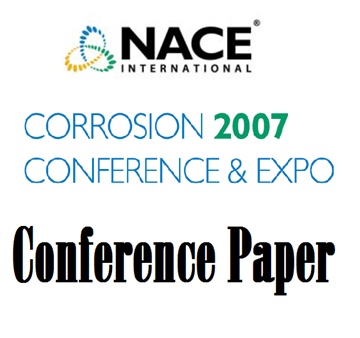Search
07198 Stainless Steel Pitting in Chloride-Sulfate Solutions - The Role of Cations
Also Purchased
08174 Unusual Corrosion Failures of Stainless Steel in Low Chloride Waters
Product Number:
51300-08174-SG
ISBN:
08174 2008 CP
Publication Date:
2008
$20.00
06497 EFFECT OF WELDING RELATED MICROSTRUCTURE ON STRESS CORROSION CRACKING SUSCEPTIBILITY IN CAUSTIC SOLUTIONS
Product Number:
51300-06497-SG
ISBN:
06497 2006 CP
$20.00
07205 Corrosion of Stainless Steel in Sulfamic Acid Cleaning Solutions
Product Number:
51300-07205-SG
ISBN:
07205 2007 CP
Publication Date:
2007
$20.00




